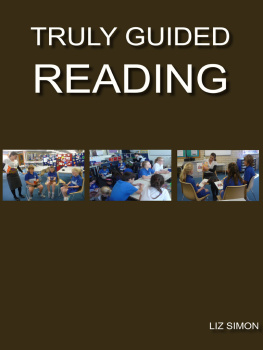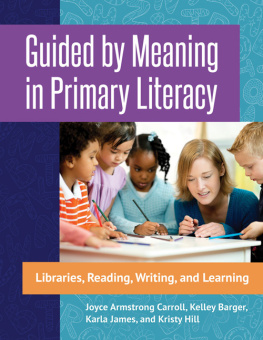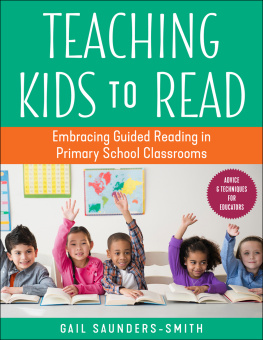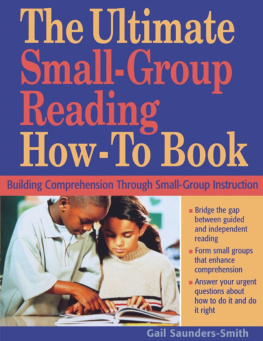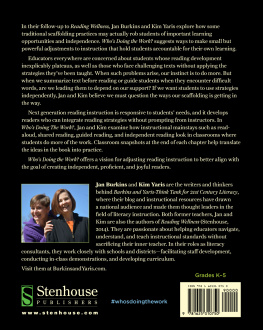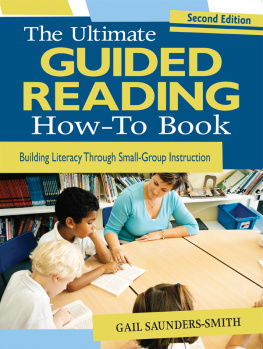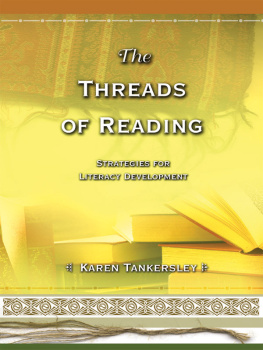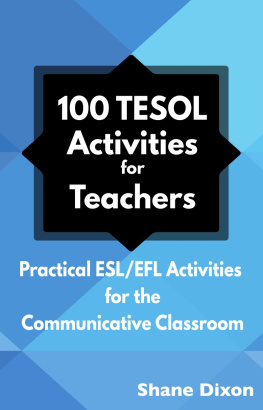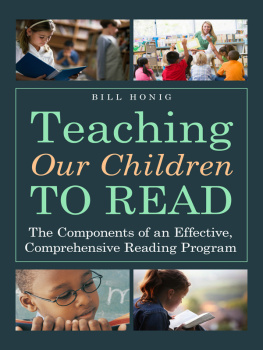
Published in Australia by

Adelaide. 5024. South Australia.
Email: information, orders
Code: LAS 1
ISBN: 978-0-646-90781-9 (pbk)
ISBN: 978-0-9923909-5-2 (ebk)
2014 LASpedagogy and success
First published January, 2014
Copyright Liz Simon
National Library of Australia Cataloguing-in-Publication entry
Author: Liz Simon
Title: Truly Guided Reading/Elizabeth
ISBN: 978-0-646-90781-9 (pbk)
Subjects: Reading study and teaching Primary.
Dewey Number: 372.414
This work is copyright. Apart from any fair dealings for the purposes of private study, research, criticism or review, or as permitted under the Copyright Act, except for Black line masters, no part should be reproduced, transmitted, stored, communicated or recorded by any process, without written permission. Any enquiries regarding copyright or permissions for reproduction must be made to LAS Pedagogy and Success.
Printed in Australia
To my dear early educator-mentor and friend, Monique Simon who set my pedagogical path and to my lovely daughter Justine Pepper who helped me, not only a preliminary edit of my book, but undertook the early formatting on her own volition.
Thank you.
What would writers do without excellent and perceptive editors? This honour goes to Marian Clift (educator) whose structural suggestions, especially, made my material so much easier to read.
Thank you.
Scott Zarcinas (DoctorZed Publishing www.doctorzed.com) is commended for helping me to publish both a hard copy and ebook. As well, he kindly brushed up the graphic design of the book making it look more professional. A special delight were the doves accompanying the page numbers.
Thank you.
I want to also thank Marc Snelson (Flinders University) for his observation that I quote in , page 91. A big acknowledgement to Nathan Taylor and Marie Newcombe and the grade 3 children from West Beach Primary School for cooperating in the taking of the pictures for the front cover.
Contents
Misconceptions and Misapplications associated with Guided Reading
Cant manage the class while I take small groups.
Receptions are particularly hard to manage.
Grades 3, 4, 5 fool around.
No worthwhile work done.
I give my groups the black line masters from published teacher resource books that accompany small books
I only take one group a session.
I take one group a week for Guided Reading.
Guided Reading inevitably turns into word study.
The teacher reacts to the ent words in the text; this study occupies most of the Guided Reading time.
Teacher reads the story before the group reads the story.
The term picture walk has become synonymous with introducing (orientating) readers to the story.
Control of discourse remains very much in hands of teachers their utterances are longer than students.
Guided Reading is a set of routine steps to work through.
Guided Reading turns into Round Robin reading where each child reads aloud a part of the text.
To read fluently a child must read at a fast rate.
I find I am often in a quandary about grouping and re grouping.
I was told to take a Running Record on each child every week.
I thought I had to begin Guided Reading straight away with my Reception children.
Guided Reading is not for older children.
I havent got time to read the books. I just choose a book.
You do not have to know what is inside it to do Guided Reading.
I thought they read the same book for a week.
Havent got the resources to have a book for each child so one child holds the book and his or her partner reads over the shoulder.

I will begin with information about the origins of Guided Reading forwarded to me by a New Zealand Reading Recovery tutor working in Westminster Borough, London during the 90s. I was also working in London at the time and she helped me put right many misconceptions and incorrect teaching practices I had developed while trying to put Guided Reading into practice. My learning about Guided Reading did not stop there. In dribs and drabs I learnt more about Guided Reading and with each piece of knowledge my Guided Reading became more effective and relaxed; more like focused conversations that Guided Reading should be.
I am forever indebted to this lovely lady.
Background information (Shirley Bickler)
Professor Dame Marie Clay carried out research in New Zealand Schools in the 1960s to observe closely what happened as new entrants to school learn to read and write. In collaboration with a group of teachers she explored a wide range of teaching procedures that might be effective with children experiencing reading difficulties. Marie Clay published a series of articles and educators such as Don Holdaway, Barbara Watson and many others took her ideas and began to devise techniques such asShared Reading.Practicing teachers around the country were looking closely at the reading process and began exploring the notion ofGuided Reading.New Zealand teachers began to timetable a block most mornings to teach reading. This gradually evolved into a formal structure which was taken over as a model by the Teachers Colleges and to this day student teachers in New Zealand are taught techniques associated with Shared Reading and Guided Reading.
Shared Reading whole class
Guided Reading small reading groups
Independent Activities small groups/individual
These reading scenarios have become an integral part of the teaching to read, think and problem solve throughout schools in New Zealand: schools in U.S.A. (Balanced Literacy), Britain (National Literacy Strategy) and Australia, Victoria, South Australia, (Early Years Literacy Program).
When I was a Reading Recovery teacher I learned that it is far more effective if the correct teaching methods were put in place rather than adapting methods to suit me (not the child!). I admit that for a long time I was on the latter path rather than the former.
As a Literacy consultant I am now outside looking in and see and hear teachers voice misconceptions and apply misapplications. Education journal articles confirm many of my observations about what is done under the name Guided Reading. I surmise that many teachers have been taking information from varied sources and have developed their own procedures or worse still have forsaken Guided Reading because they are confused and view it as not worth the effort that is involved. And there is effort, in the first months, associated with Guided Reading.
I am passionate about Guided Reading; it is a wonderful teaching practice that gives thinking strategies to children to become independent readers, readers for life. As students read and talk they internalize the thinking not only constructing literal meaning but thinking more deeply, for example, looking at a range of perspectives, what could be.
Misconceptions and Misapplications associated with Guided Reading.
Reading Recovery is the model. Like Reading Recovery Guided Reading is differentiated learning you cater for varied learning needs, supporting delayed readers and further, inspiring more capable readers. It is a group activity, in the classroom, with a purpose or focus, therefore teachers are not inclined to react to errors; instead new learning builds on the known. Guided Reading ensures developmental, continuous and successful learning.
Next page
